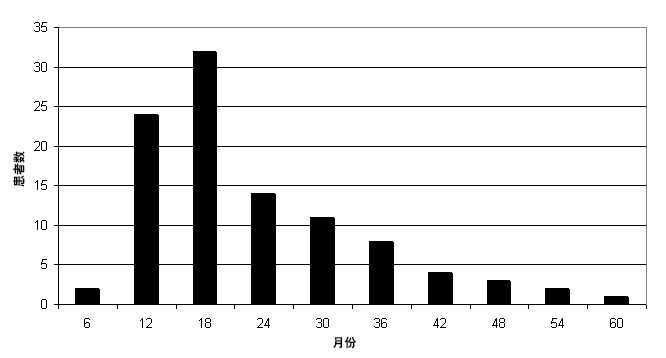热性惊厥在儿童期常见。据估计,美国和西欧的热性惊厥累计发病率在 2% 至 5% 之间,日本为 6% 至 9%,印度和关岛为 14%。[1]Capovilla G, Mastrangelo M, Romeo A, et al. Recommendations for the management of "febrile seizures": Ad Hoc Task Force of LICE Guidelines Commission. Epilepsia. 2009 Jan;50(suppl 1):S2-6.http://onlinelibrary.wiley.com/doi/10.1111/j.1528-1167.2008.01963.x/fullhttp://www.ncbi.nlm.nih.gov/pubmed/19125841?tool=bestpractice.com[10]Patel N, Ram D, Swiderska N, et al. Febrile seizures. BMJ. 2015 Aug 18;351:h4240.http://www.ncbi.nlm.nih.gov/pubmed/26286537?tool=bestpractice.com 马里亚纳群岛发病率高达 14%。太平洋地区较高的发病率可能是遗传因素或流行发热所致。亚洲最常见的病因是甲型流感,特别是流感暴发期间。[11]Chiu SS, Tse CY, Lau YL, et al. Influenza A infection is an important cause of febrile seizures. Pediatrics. 2001 Oct;108(4):E63.http://pediatrics.aappublications.org/cgi/content/full/108/4/e63http://www.ncbi.nlm.nih.gov/pubmed/11581471?tool=bestpractice.com[12]Millichap JG, Millichap JJ. Role of viral infections in the etiology of febrile seizures. Pediatr Neurol. 2006 Sep;35(3):165-72.http://www.ncbi.nlm.nih.gov/pubmed/16939854?tool=bestpractice.com [Figure caption and citation for the preceding image starts]: 一所医科大学附属的三级医院接受治疗的 100 例患儿中,热性惊厥发病年龄在 12 和 18 个月最高;24 个月以后迅速降低图表由医学博士 John J. Millichap 创建;获许使用 [Citation ends].
[Figure caption and citation for the preceding image starts]: 一所医科大学附属的三级医院接受治疗的 100 例患儿中,热性惊厥发病年龄在 12 和 18 个月最高;24 个月以后迅速降低图表由医学博士 John J. Millichap 创建;获许使用 [Citation ends].
大多数人群研究报告的男女比例为 1.6:1。[7]Millichap JG, Madsen JA, Aledort LM. Studies in febrile seizures V: a clinical and electroencephalographic study in unselected patients. Neurology. 1960 Jul;10:643-53.http://www.ncbi.nlm.nih.gov/pubmed/14422602?tool=bestpractice.com[13]Millichap JG. Febrile convulsions. New York, NY: Macmillan Company; 1968. 文献病例报道的广泛地理分布表明,所有种族的儿童均受影响。 社会经济因素尚未被证实。
遗传易感性、低龄、中枢神经系统发育不成熟以及环境因素非常重要,因为它们是惊厥阈值温度的调节因素。遗传方式包括常染色体显性、隐性遗传及多基因遗传,已经发现几个基因位点。
季节、昼夜节律、地域、电解质以及营养因素(即缺铁和缺锌)与易感性也有关系。[12]Millichap JG, Millichap JJ. Role of viral infections in the etiology of febrile seizures. Pediatr Neurol. 2006 Sep;35(3):165-72.http://www.ncbi.nlm.nih.gov/pubmed/16939854?tool=bestpractice.com[14]Reid CA, Hildebrand MS, Mullen SA, et al. Synaptic Zn2+ and febrile seizure susceptibility. Br J Pharmacol. 2017 Jan;174(2):119-25.https://www.ncbi.nlm.nih.gov/pmc/articles/PMC5192799/http://www.ncbi.nlm.nih.gov/pubmed/27771943?tool=bestpractice.com [Figure caption and citation for the preceding image starts]: 一所医科大学附属的三级医院接受治疗的 100 例患儿中显示,热性惊厥具有季节性:春季和冬季发病率最高;夏季发病率最低图表由医学博士 John J. Millichap 创建;获许使用 [Citation ends].
[Figure caption and citation for the preceding image starts]: 一所医科大学附属的三级医院接受治疗的 100 例患儿中显示,热性惊厥具有季节性:春季和冬季发病率最高;夏季发病率最低图表由医学博士 John J. Millichap 创建;获许使用 [Citation ends].
 [Figure caption and citation for the preceding image starts]: 一所医科大学附属的三级医院接受治疗的 100 例患儿中,热性惊厥发病年龄在 12 和 18 个月最高;24 个月以后迅速降低图表由医学博士 John J. Millichap 创建;获许使用 [Citation ends].
[Figure caption and citation for the preceding image starts]: 一所医科大学附属的三级医院接受治疗的 100 例患儿中,热性惊厥发病年龄在 12 和 18 个月最高;24 个月以后迅速降低图表由医学博士 John J. Millichap 创建;获许使用 [Citation ends]. [Figure caption and citation for the preceding image starts]: 一所医科大学附属的三级医院接受治疗的 100 例患儿中显示,热性惊厥具有季节性:春季和冬季发病率最高;夏季发病率最低图表由医学博士 John J. Millichap 创建;获许使用 [Citation ends].
[Figure caption and citation for the preceding image starts]: 一所医科大学附属的三级医院接受治疗的 100 例患儿中显示,热性惊厥具有季节性:春季和冬季发病率最高;夏季发病率最低图表由医学博士 John J. Millichap 创建;获许使用 [Citation ends].